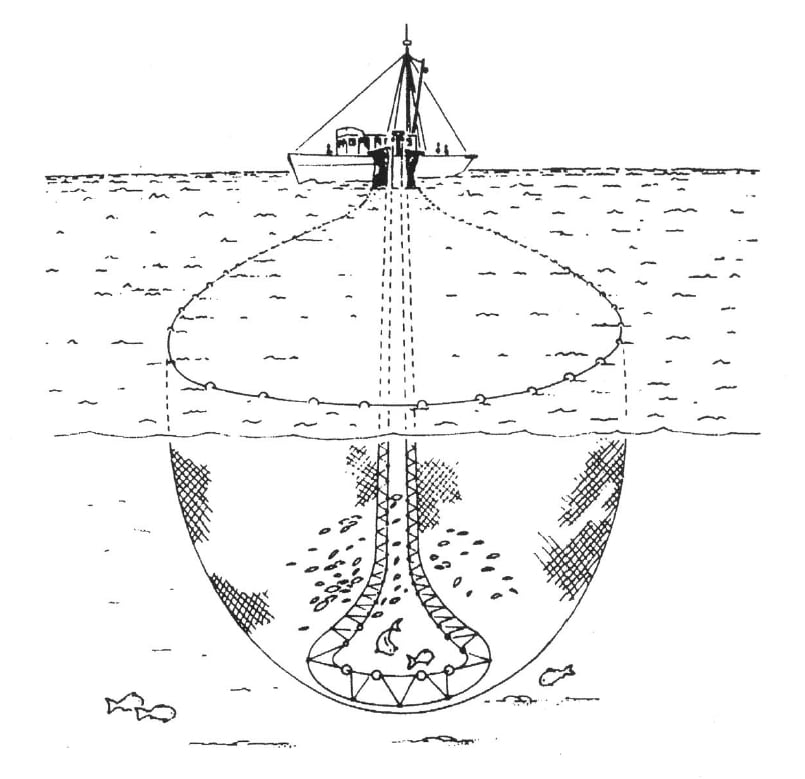The development, efficiencies and impacts of the purse seine net for herring fishing (other fish, of course, also apply)
PURSE SEINING
Aggghhhh!
With shoal-finding technology and little chance of escape, for herring the only hope offered by the purse seine net lies in the fisherman’s restraint.
In History and Global Review of Purse Seines (1971) Yunosuke Iitaka writes succinctly, The purse seine is almost rectangular in shape… The essential feature of this net is the closing by pulling a purse line which is threaded through a series of rings along the bottom so that the lead line is bunched or puckered.
Designed to stop the fish escaping out of the bottom of the net as the catch is hauled in, the purse line is so called because it pulls the net together after the manner of a purse’s drawstring. The shoal is surrounded, the noose is pulled tight.

Development
Shore-based seine nets go back to Ancient Egypt at least. Yunosuke talks of the writer Koziki referring to their use in sardine fishing in the early C8th.
Ring netting was developed from shore-based seining by the herring fishers of Tarbet on Loch Fyne in the 1830s. Purse seining had already been developed in 1826 for pelagic species, specifically the menhaden fishery of Rhode Island on the USA’s Atlantic coast.
Menhaden is an ultra-oily member of the Clupeidae family. It has been canned under various names – American sardine, American club fish, shadine and ocean trout – although, from long before the advent of canneries it has mostly been used for fertiliser.
According to Alan Davidson (North Atlantic Seafood, 1979), menhaden and an alternative name, Pogy, both derive from Native American words for fertiliser. This was a bad omen for the herring and many other species besides.
The Impact
By the early C20th purse seining had spread worldwide, but it was largely resisted in the English and Scottish herring fleets. The efficiencies it brought to other North Sea herring fleets – and to new boys on the block, Iceland – will have played a significant role in the loss of crucial markets for the ‘Scotch cure’ in Russia and Germany between World Wars I & II.
By the time the British adopted purse seining in the 1960s the North Sea’s herring populations were well on the way to collapse.
Larger catches require bigger and bigger vessels. Much of the British fishing fleet was commandeered during both world wars and used among other things for anti-submarine work. The crews became familiar with ASDIC. There’s uncertainty as to what the letters actually stand for, but by World War II the underwater radar technology could locate submarines or shoals of fish at considerable distances. The first commercial fish finders emerged around 1950.
The hydraulic power block and net hauler (first produced in 1954) enabled even larger purse seine nets and even larger vessels.
95% of the English herring quota is now allocated to just one Dutch, Namibian-flagged vessel, Cornelis Vrolijk FZN, which comes in at 114m long.
Alas! The herring!
Note: Even though it is made available in English, providing a link to Yunosuke Iitaka’s History and Global Review of Purse Seines seems to require the ability to read Japanese. Type it into Google and the download comes up.
